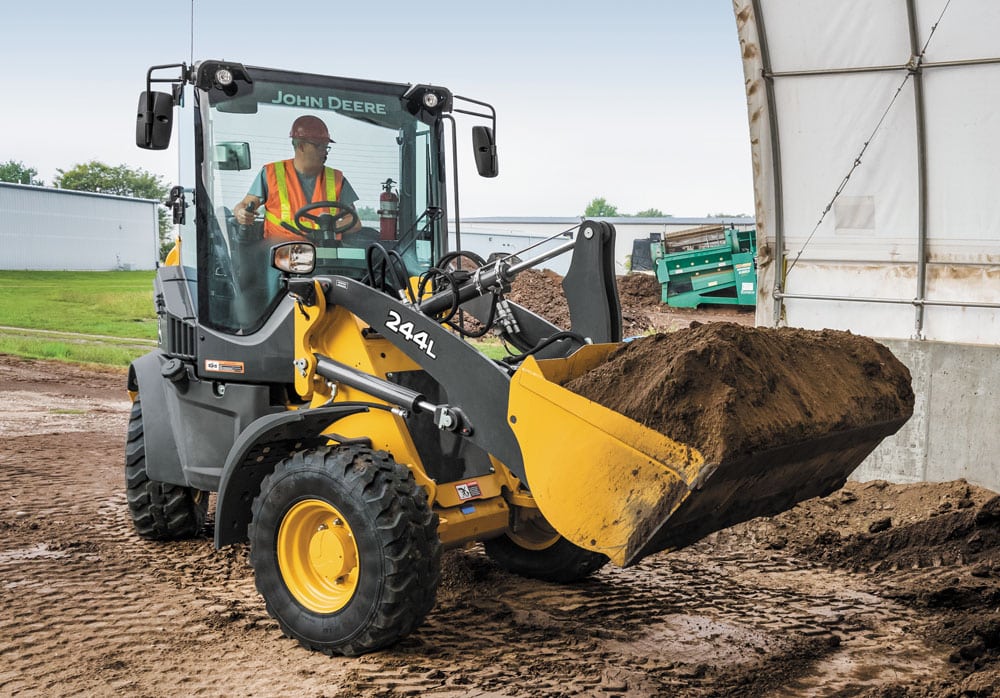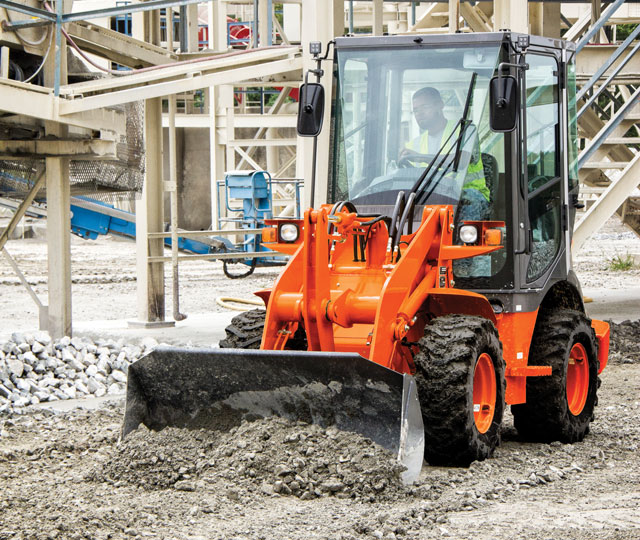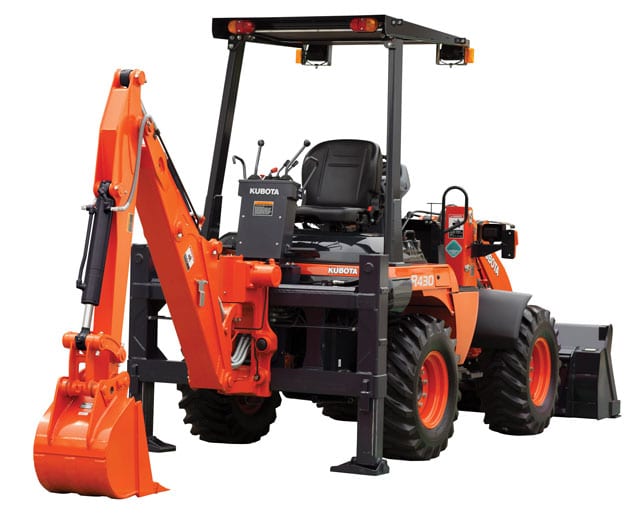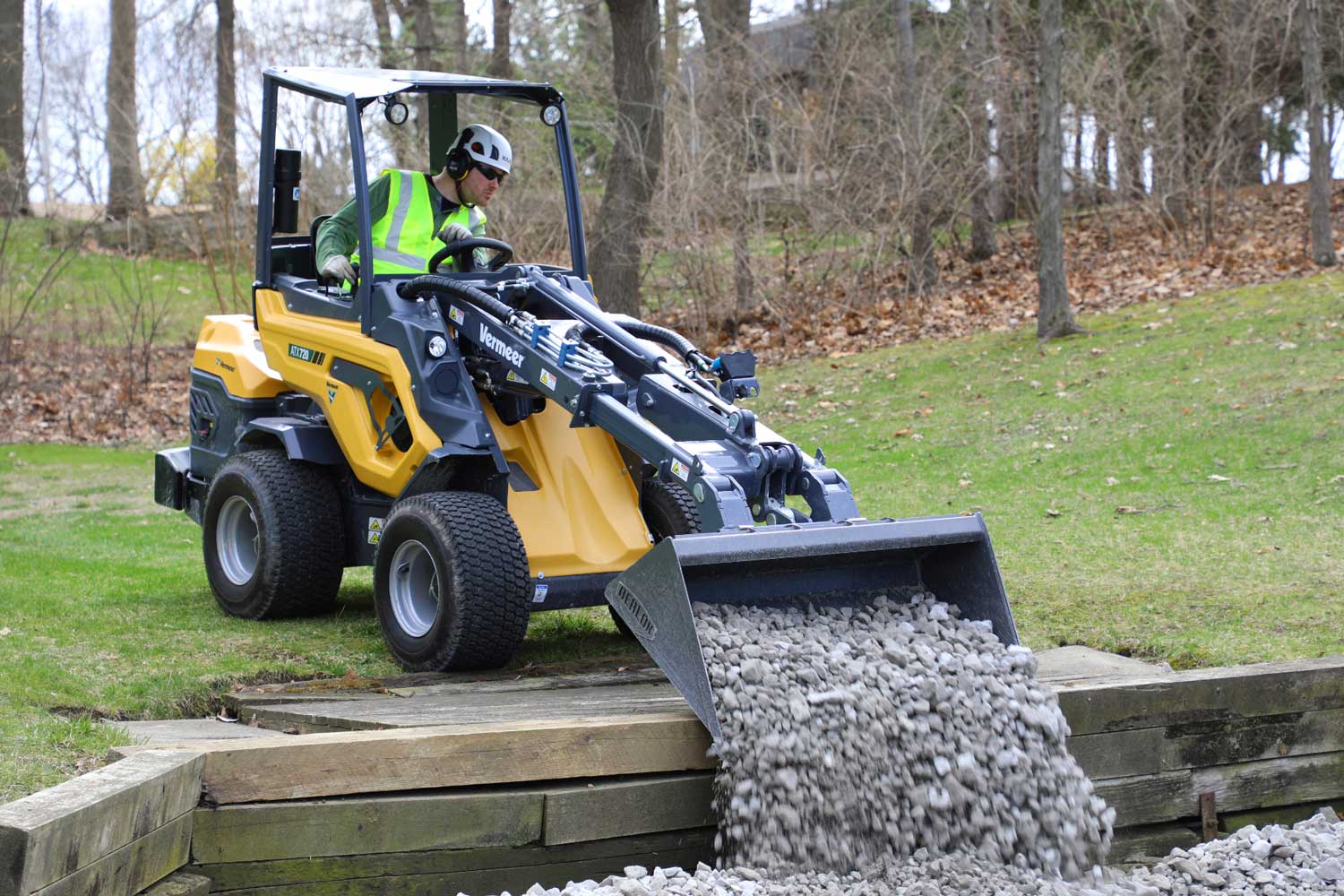Just the Facts — A Quick Guide to Compact Wheel Loaders

You’re busy. We get it. You don’t have time to read a 2,000-word article on the small wheel loader market. You’ve maybe already decided that it’s not really the machine for you. It’s too expensive. It looks a little too big to easily trailer. Plus, you’re heavily vested in your skid steer attachments. Double plus, the rental lots never seem to have them, so you never get to operate those units. We get that, but just hear us out. Compact wheel loaders have many advantages over competitive machine categories: better fuel economy, less tire wear, increased visibility and beyond. We’ll make this easy on you by quickly breaking down the American market for compact wheel loaders into short, easy-to-digest paragraphs. Here we go.
The Major Brands
These small tool carrying articulating or all-wheel-steer loaders are becoming popular enough that we added compact wheel loaders to our annual Spec Guide in 2017. This year, there are 13 major manufacturers including Case, Caterpillar, Gehl, Hitachi, John Deere, JCB, Kubota, Mustang, New Holland, SDLG, Takeuchi, Volvo, Wacker Neuson and Yanmar. Despite all these machine makers, the units sold in the U.S. market doesn’t hit the big sales numbers you’d see in Germany or Japan, but it’s growing. In America, the small wheel loader’s main competition is the skid steer and its tracked cousin the compact track loader.
The Most Popular Brands
“Cat and Deere have the biggest share in North America for compacts,” says Gary Bell, compact dealer business manager with Hitachi Construction Machinery Loaders America Inc. “Kubota comes in third, and they only have a couple models. They seem to have a lot more awareness of these customers and much closer contact.” “Based on EDA data, Cat has the largest share of compact wheel loaders in the U.S. at 30 percent with Deere at 21 percent. Hitachi, as a newcomer to this market, is just getting warmed up but is forecasting a 40 percent increase in 2019 as the Tier 4 models are introduced to the market,” states Sam Shelton, marketing manager at Hitachi.
Small Wheel Loader Buyers
“Landscape, agriculture, commercial building and rental are large segments for compact wheel loaders,” explains Drew Miller, product marketing manager at John Deere. “Landscape includes residential and commercial landscape development as well as landscape supply yards, and many of these customers are using machines for snow removal in the winter. Agriculture continues to grow as customers are replacing other machines with compact wheel loaders and can still have the flexibility with a skid steer-style coupler to use attachments. Rental is heavily driven by snow removal but in general is an opportunity to also support seasonal demand. We are also seeing growth in the quarry and road building segments.”
Yes, You Can Use Skid Steer Attachments
Compact wheel loaders can wield hydraulic attachments (in the 15- to 33-gpm range), with the ability to travel between different tasks at speeds up to 20 mph. Augers, cold planers, grapples, snow blowers — a compact wheel loader has a toolbox full of job possibilities. Machine speeds have increased to quickly transport material, and the introduction of ride control provides operators a shock absorbing system that allows them to travel faster and maintain the bucket or attachment load. And, most compact wheel loader machines have that skid steer attachment plate design as a standard feature to add to the machine’s versatility in handling the same attachments.

You Can See Better
“Operators enjoy the benefit of sitting up higher on a compact wheel loader, which gives better visibility to the surroundings compared to compact track loaders and skid steer loaders,” says Jeff Jacobsmeyer, product manager for excavators, wheel loaders and backhoes at Kubota. “With our right joystick, included with the R530 and R630, we have a forward and reverse switch that allows for convenient, on-the-go direction changes without clutching or braking too. Operators just need to make sure that the recommended operating capacities are not exceeded according to the compact wheel loader or attachment guidelines, since the lifting capacities are often greater than many compact track and skid loaders.”
The Major Options
Operators have the big choice of choosing an articulated or all-wheel steer machine. An articulated loader excels in indoor applications, narrow spaces and on sensitive terrain (like pristine lawns). An all-wheel steer loader is a little less maneuverable but is known to have more stability on uneven grounds such as slopes. Besides drivetrain, there will be plenty of high-tech amenities, optional upgrades and differentiating standard features — joystick and wheel controls, parallel lift and return-to-dig functions, air conditioned and heated cabs, creeper and rimpull controls, tire and attachment choices, roading lights and rotating beacons, LCD displays, security features and so much more. Some units even have telescoping booms.
Not a Huge Rental Item
“We haven’t found them to be a major factor to rental companies,” says Bell. “This is because rental companies don’t promote one product over another. They simply fill the demand for the product requested. So, if a customer doesn’t come in asking for a compact loader, a rental company will just rent him a skid steer. So, it will take regular full-service dealers to build the demand by selling or renting compact loaders to customers to expand this market. They are used in snow rentals, and we are getting some interest from rental operations, but their main loader focus is on 2.5- to 4-cu-yd loaders for rent.”
Skid Steer vs. Compact Wheel Loader
Compared to skid steers, compact wheel loaders articulate or use all-wheel drive which is: A) easier on tires; B) easier on turf and other surfaces; and C) better on fuel efficiency. Other advantages include ground speed, ground clearance, longer wheel base for better ride quality, greater lift capacities and higher lifting ability. Disadvantages include the overall height of each unit and their ability to work under low overhead obstacles. Skid steers offer more hydraulic power to the attachment, they are easy to transport and they have a zero turn radius. Also, compact wheel loaders are typically 20 to 25 percent higher in initial cost than a similar-sized skid steer.
The Cost and Size Category
“It depends on how big and small you consider as there are some under $50,000, but $50,000 to $150,000 covers a heavy majority of the market,” says Miller. “Skid steers and compact track loaders range from $30,000 to $100,000. While skid steers and compact track loaders are still less expensive, a compact wheel loader typically lasts longer, provides better resale value and requires less operating cost.” Most small wheel loaders are categorized by horsepower (typically anything under 80 to 110 hp) and bucket size, which is measured in cubic yards (1 to 3 cu yds for compacts).
The Number of Units Sold Each Year
“For the under 100-hp classification of loaders, the compact wheel loader market was 4,950 units in 2018, according to industry statistics,” explains Shelton. “But keep in mind that AEM, the trade association that collects the data, does not get data from several small companies that make compact loaders or similar machines. Companies like MultiOne, Giant and others like them are not in the market statistics. Now, their machines aren’t necessarily exactly traditional loaders. They may have telescoping booms, all wheel steer and other features that aren’t normal loader designs, but these machines are still filling the demand for compact loaders in general.”
How to Start Your Search
Size and specs are always a good place to start — engine horsepower, operating weight, breakout force, bucket capacity, travel speed, turning radius, width, height and beyond. To simplify it, start by focusing on loading (the major application). Selecting the right loader is often based on the amount of material (measured in cubic yards) that needs to be moved per hour, the weight of the material and the area that the loader will operate in. It’s important that you know how the loader will get the material, how quickly the material needs to be moved and where the material needs to go. Look for a brand that accommodates your bucket work.
Some Buying Advice
“Purchasing a compact wheel loader is a substantial investment, so the ROI and future demands of the loader need to be considered early in the buying process,” suggests Jacobsmeyer. “Renting your desired machine could be a viable option to make sure the machine works well in the job application. Kubota offers a rent-to-own program that allows customers to rent first before finalizing a purchase. Convenient long-term leases are also available, as well as low rate loans that are offered at all authorized Kubota dealers that sell R Series wheel loaders.”
Backhoe Wheel Loader?

Kubota’s R430 is unique with the ability to install a backhoe that provides up to 9 ft of digging depth for trenching projects. The R430 is the only model that has a backhoe option and will be a popular choice when working in extremely compact areas. The bend in the middle articulation design for all Kubota compact wheel loaders allows for less scuffing and damage to tender surfaces compared to compact track loaders or skid steers. Another unique Kubota feature on a differnet unit: The 6430 features four operating modes that are referred to as Power, Standard, Economy and Attachment. With a broad selection of operating modes, the operator can match the machine to the application and front attachment for the most efficient operation.
Start by Considering These Units
Kubota R630
The R630, Kubota’s largest model, is currently the most popular in the Kubota compact wheel loader lineup. Customers purchase the loader for uses ranging from agriculture to recycling applications. The R630 has an Attachment Mode feature that allows the operator to creep the transmission while powering the front hydraulic auxiliary at full throttle.
Hitachi ZW50 and ZW80
Formerly branded Kawasaki, Hitachi’s 45-hp class Hitachi ZW50 and 63-hp class Hitachi ZW80 are popular units. The ZW50 and ZW80 feature Kubota engines, responsive hydrostatic transmissions, limited slip differentials (ZW50) and a travel mode switch. The operator will appreciate a smooth experience, easy-to-read monitor and the comfort of suspension seats.
John Deere 244L and 324L
These L-Series models are ideal for landscape, snow removal, ag material handling and construction tasks. The new models come with the industry-exclusive Articulation Plus steering system, providing great lift capacity and maneuverability. These machines are in the largest size class for compact loaders in order to be sized to fit many different applications.
Cat 903D
Caterpillar’s just launched 903D super small wheel loader is boasting a 25 percent increase in both lifting capacity and travel speed compared to the previous model. Boom arms are available in both standard and high-lift configurations. Standard features include boom float and return-to-dig functions. New optional features include creep control and throttle lock.
Everything Wacker Neuson
Wacker Neuson is the only manufacturer to offer three types of wheel loaders in North America: all-wheel steer, articulated and telescopic. All have the power, performance and operator comfort to tackle any job and quickly and precisely manage all types of loads, says the company. There are 10 units working in everything from construction to recycling.
Intrigued and want more wheel loaders? We’ve got that, just click here.
Keith Gribbins is publisher of Compact Equipment.




